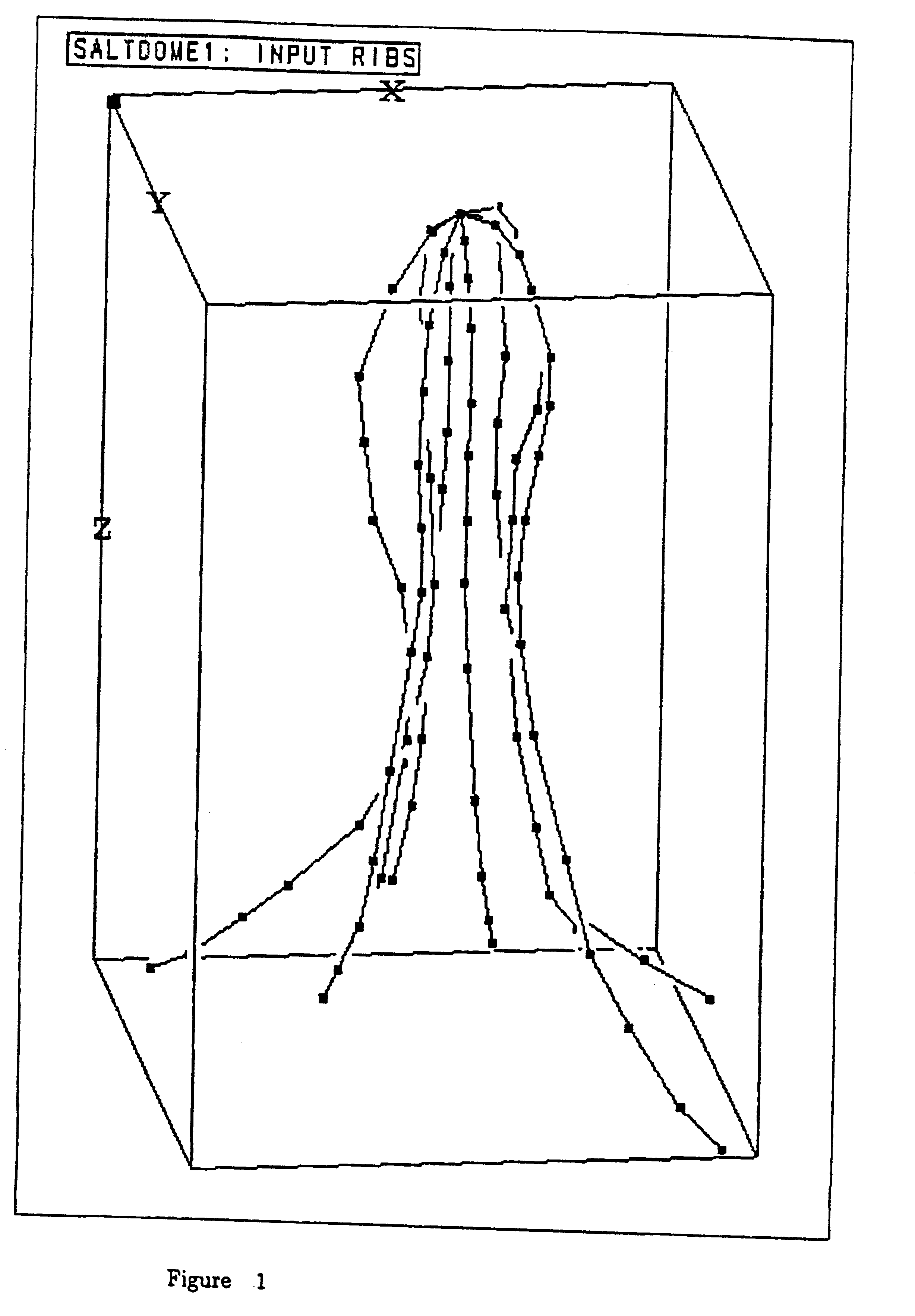Method and apparatus for creating representations of geologic shapes
a geologic shape and representation technology, applied in the field of methods and apparatus for processing seismic data, can solve the problems that the seismic approach to fault surfaces cannot handle the more complex geologic shapes
- Summary
- Abstract
- Description
- Claims
- Application Information
AI Technical Summary
Problems solved by technology
Method used
Image
Examples
Embodiment Construction
The space between two neighboring polyline ribs can be filled, i.e., triangulated, easily by a technique called here "ladder triangulation". The two ribs are likened to the two rails of a ladder. The ladder triangulation is built by adding rungs, each rung connecting a node on one rib to a node on the other rib and thereby (after the first rung) creating one more triangle. In essence the first rung connects node 1 of polyline 1 to node 1 of polyline 2, and the second rung connects either node 1 of polyline 1 to node 2 polyline 2 or else node 1 polyline 2 to node 2 of polyline 1, whichever rung is shorter. Rung addition is continued this way with binary choices until the last rung connects the two last nodes. There will be (n1+n2) / 2 such rungs where n1 and n2 are the respective node counts of the two polylines, and computation is obviously linear in the node count.
The same process is repeated between polylines 2 and 3, 3 and 4, etc. and may also be repeated between the last polyline ...
PUM
 Login to View More
Login to View More Abstract
Description
Claims
Application Information
 Login to View More
Login to View More - R&D
- Intellectual Property
- Life Sciences
- Materials
- Tech Scout
- Unparalleled Data Quality
- Higher Quality Content
- 60% Fewer Hallucinations
Browse by: Latest US Patents, China's latest patents, Technical Efficacy Thesaurus, Application Domain, Technology Topic, Popular Technical Reports.
© 2025 PatSnap. All rights reserved.Legal|Privacy policy|Modern Slavery Act Transparency Statement|Sitemap|About US| Contact US: help@patsnap.com



